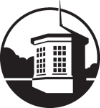At its core, a liberal arts institution exists to teach interpretive skills. College is the vital period in which the ability to read becomes the ability to read discerningly. These four years strengthen the student’s capacity to decipher, compare, extrapolate—and, in the deepest sense, evaluate what s/he reads. But what kinds of contemporary texts demand this critical reading? Or, to put it another way: in what areas should today’s students become skilled interpreters?
Although verbal argumentation holds its time—honored place in higher education, we also recognize that since the explosion of the Information Age, our students have been facing demands for literacy on other fronts. Not only must we heighten their sensitivity to language-‐based reasoning, but we must also refine their acuity as readers of visual and mathematical codes. Therefore, our plan seeks to foster their skills at critically interpreting:
- visual media:
- images, both moving and still;
- pictorial forms of argument;
- graphed or pictorial displays of information.
- computational information:
- data of all kinds;
- the structures in which data are arrayed.
In seeking to build literacy in these two realms, we have chosen not to map them as parallel paths but rather as areas that intersect with our traditional text—based idea of literacy. Our curricular plan embraces developments in computer science, neuroscience, and humanistic study of consciousness. These fields are together discovering how both primary “information” and the brain’s response to that information make use of verbal, visual, and mathematical structures. In short, language, images, data patterns, and ideas are now understood to be intertwined. As scholarship explores the borderland between perception and computation, we need a curriculum that invites our students to explore this cognitive borderland both analytically and inventively. This curriculum must prepare them for a world that is finding new ways to organize and express complex thought. And so we have designed a set of intersecting spaces (curricular and physical) in which modes of seeing and explicating the world can be productively combined.
We imagine, for instance:
- technologically savvy artist-‐programmers experimenting with videography, innovative sound technologies, and computer-generated sculpture to create new environments for story-telling and historical inquiry;
- social entrepreneurs blending sophisticated data-mining capabilities, graphic modeling, and behavioral analysis to consider poverty-fighting strategies like micro-financing across national and international communities;
- students joining researchers to trace meaningful patterns within large masses of images and data, seeking the relation of population migrations to the spread of disease or the transmission of ideologies.
In short, the plan will give faculty the resources needed to strengthen these budding areas of inquiry, expanding our students’ “literacy” along innovative frontiers. To examine each field more specifically,
-
Computational Studies. Computational studies at Haverford have recently become a central feature of the curriculum, comprising:
- Concentrations in advanced Scientific Computing and Mathematics & Economics;
- increased attention to statistical and computational methods across the social sciences;
- study of cultural texts and performances via digital tools;
- interest in digital technology as itself a subject of inquiry across many disciplines.
There are opportunities for synergy, in both teaching and research, across these activities. By defining the common skills, idioms, and techniques driving computational study and digital inquiry, we can enrich courses both within and across disciplines. At a higher level, computational literacy will enable our students to engage technological change both critically and creatively. They will be able to navigate large databases, sophisticated algorithms, and complex information networks.
-
Visual Studies. Haverford’s curriculum includes more than 100 courses that address features of visuality, such as:
- microscopy, medical imaging, and astronomical observation in the natural sciences,
- strategies for mapping and visualization of data in the social sciences;
- historical, political, philosophical, and aesthetic study of images in the humanities.
We want to make such use of imagery more self‐conscious and interrogative. Our plan promotes opportunities, within all three divisions, for students to make images with critical awareness of their power and limitations—opportunities that arise in such areas as:
- documentary film-‐making (which has been supported by HCAH);
- Fine Arts;
- visual analytics (e.g., Geographic Information Systems, as offered by Environmental Studies);
- data visualization practices in Computer Science and other disciplines.
A coherent Visual Studies curriculum will bring faculty and students together from across the divisions to explore the links among perception, design, visual reasoning, and visual production. Moreover, such a program can enhance curricular exploration of multi‐media expression, which takes place at the intersection of digital text, sound, and visual imagery.
New critical literacies require not only new tools and new personnel but also new spaces. Crucial features of the latter are:
- renovation of the Old Gym and Union/Roberts as sites for engagement with visual culture, arts, and media;
- renovation of Magill as a center for integrating digital and traditional archives of information;
- renovation of Sharpless as the completion of the KINSC, where advanced instrumentation is accelerating discovery in and across scientific disciplines.
Finally, new critical literacies will also demand programs to train students and faculty in effectively leveraging information technology. These programs will rely on relevant faculty, librarians, and IT specialists adept in navigating between digital technologies and traditional fields of inquiry.
